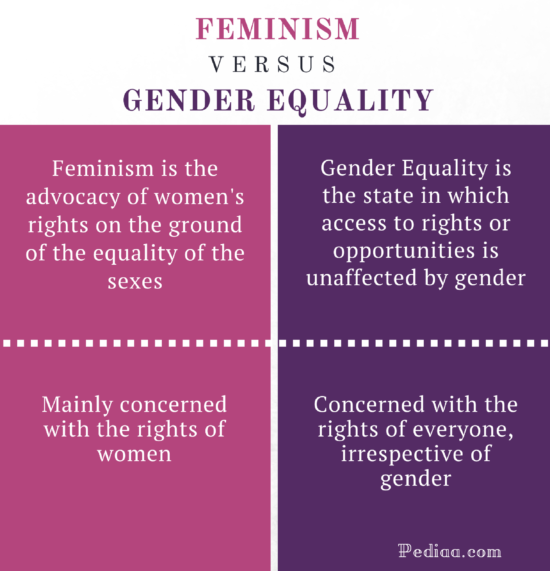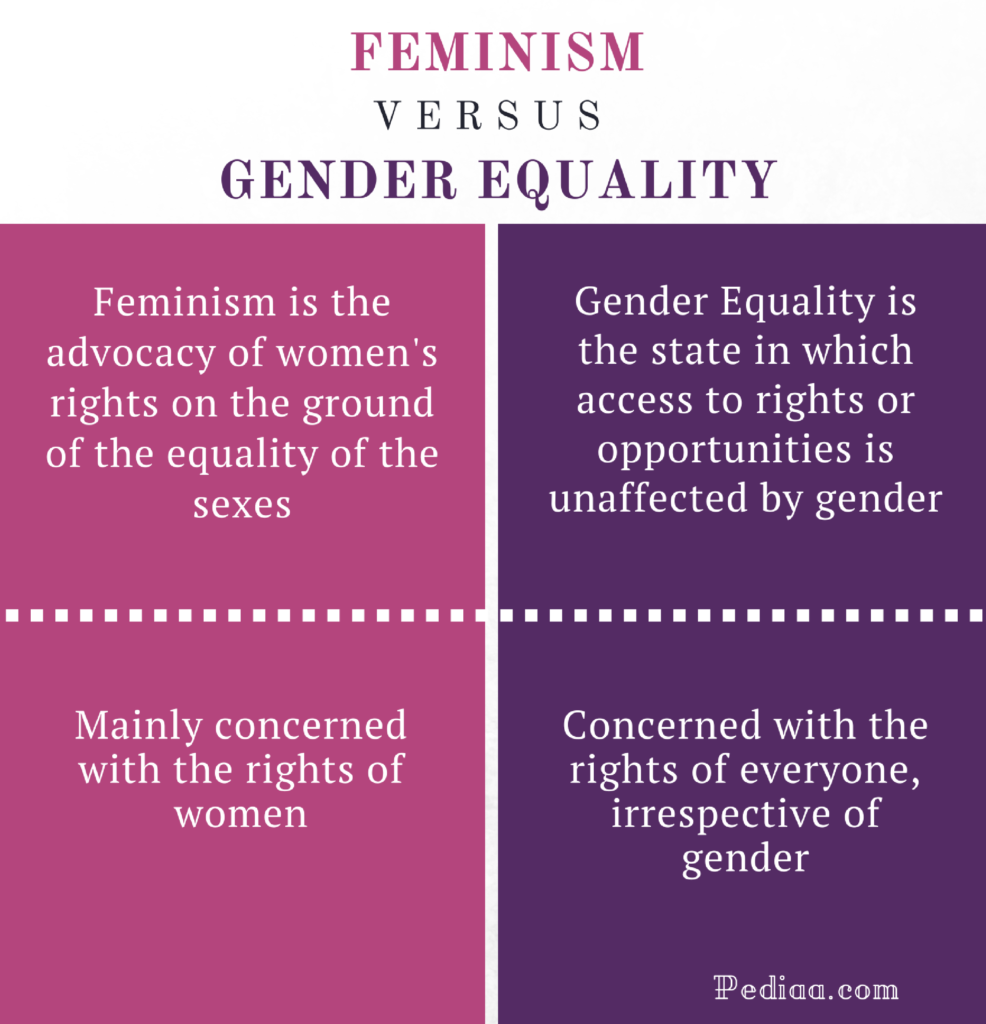In the modern era, it seems slightly preposterous that there are still people arguing that gender equality has been achieved and feminism is no longer necessary. Women are still systematically oppressed in Western societies, whether it’s in the form of the pay gap, “manspreading” or online harassment. However, it’s time for us to realize that contemporary feminism as it exists is insufficient to solve the problem. Liberal, third-wave feminism had its time in the sun, but not only it is no longer an effective vehicle for change, it has become an active impediment to achieving gender equality and social change. As a result, it is time to re-examine feminism and its role as a force in modern society. By updating feminism to fit the needs of the modern world, we can finally achieve true equality between the genders and banish misogyny and sexism to the history books once and for all.

Why Feminism and Why Gender Equality?
Indeed, this isn’t the first time feminism has been radically altered to fit the needs of a new generation of women. Feminism has gone through several tonal and political shifts over the past century as it shifts and adopts to new societal paradigms. First-wave feminism in the late 1800’s and early 1900’s was defined by the suffragettes, women who fought to extend the franchise to both sexes, not just men. Additionally, first-wave feminism in the U.S. also helped push the temperance movement, a movement focused on banning alcohol in order to help alcoholic men clean up their act and become productive citizens. Following the extension of the franchise to women in the U.K., U.S. and other countries, feminism gradually metamorphosed into its second wave, which reached its peak in the 1960’s and 1970’s. Second-wave feminists such as Gloria Steinem, Betty Friedan and Bella Abzug fought for women’s right to enter the workforce and not be dependent on men in order to survive. The second-wave feminists also sought to free women from the shackles of marriage and allow them to express themselves sexually however they wanted, going hand in hand with the concurrent sexual revolution in the West. After women began entering the workforce en masse in the 1970’s, feminism eventually evolved into its third wave in the 1990’s. This wave of feminism focused on fighting rape, sexual assault, and sexual harassment, as exemplified by feminist punk rock acts like Bikini Kill and Sleater-Kinney. Third-wave feminism also expanded its focus to include women of color and non-heterosexual women, who had been neglected or ignored in the previous waves (Mohanty, 52). Third-wave feminism remains the dominant strand of feminism in Western societies today, and that’s precisely the problem.
Normative theory offers a roadmap for feminists who are seeking to become more effective political activists. Normative theory is defined as idealism, the process of formulating societies with ideal policies and norms, rather than simply focusing on the here and now. Empirical theory, the dominant theory of modern feminism, focuses on what is currently happening and what is possible within the current system (Scott, 33). Normative theory rejects those limitations and discusses what could be or what ought to be, imagining a world where the problems of society no longer exist. Modern feminism has faltered in part because it refuses to reach for the stars and has no political vision. Normative theory holds the key to breaking feminism out of its existing rut and helping it become an effective force once again.
The central problem with modern feminism is that it is entirely focused on the personal and not on the political. The activists of yore stated that “the personal is political,” but the problem is that modern feminists have no ability to distinguish between the two. Third-wave feminism concerns itself entirely with personal issues such as sex and has an overly obsessive fixation on personal autonomy (Munro, 23). For example, many third-wave liberal feminists defend the legalization and availability of pornography because they view it through a lens of personal choice: in other words, porn is good because the women in it are freely expressing themselves sexually. This analysis ignores the fact that pornography is the representation of the patriarchy’s id: it is an inherently misogynistic enterprise that objectifies women, reduces them to mere sex objects, and has them exist solely for the gratification of men. Framing pornography in the context of personal choice ignores the very real harm that this “choice” inflicts on the self-esteem and self-image of girls. By liberal feminist logic, a starving refugee who steals from a supermarket made a “choice” to do so, even though she would die if she hadn’t shoplifted. A choice made under duress is not a true choice, and women in Western societies exist in a constant state of duress due to the misogynistic nature of our surroundings. In framing everything around personal choice, third-wave feminists have abandoned the primary means by which they can effect social and political change.
Along the same lines, liberal feminism has become a reactionary, right-wing force because it refuses to acknowledge the struggles of women from vulnerable groups, such as Muslims. For example, a common refrain that feminists get from anti-feminists is that we have nothing to complain about in Western societies, because there are countries in the Middle East or Africa where women have it far worse. Beyond the fact that this is an appeal to naked racism and Islamophobia, the oppression of women in other parts of the world does not excuse the presence of it at home (Allen, 52). Far-right nationalists and fascists have seized on this liberal feminist conceit to try and split the left movement by appealing to women’s rights; for example, recently defeated far-right French presidential candidate Marine Le Pen tried to appeal to female voters by whipping up Islamophobic fears of Muslim refugees coming to oppress French women. Indeed, some fascist politicians such as the Netherlands’ Geert Wilders have the audacity to identify as feminists themselves, because they adhere to liberal feminist beliefs of personal autonomy. The fact that open racists such as Le Pen and Wilders can advocate for liberal feminism as part of their political platforms should be proof enough that liberal feminism should be consigned to the dustbin of history.

As mentioned above, contemporary feminism does a poor job of paying attention to the needs of women of colour, particularly Muslim women. Liberal feminists and far-right ideologues have tried to drive a wedge between different groups of radical women by arguing that the hijab and other traditional forms of Muslim female dress are regressive or un-feminist. The reality is that wearing a hijab or a burka is one of the most feminist acts that a woman can engage in today. Because feminism has historically treated women of colour like second-class citizens, it’s doubly important for us to pay attention to the needs of Muslim and minority women now, even if we have misgivings about their lifestyles. Muslim women who embrace the hijab or the burka are resisting the influence of the patriarchy, which expects and demands that women offer themselves as sexual objects to any man who lays eyes on them. In hiding their hair and other parts of their body from view, Muslim women are explicitly rejecting the objectification and misogyny of Western societies, who view women as mere playthings for men looking to be amused. Instead of castigating them for their chosen dress, we should honour them for saying no to the sexism of Western patriarchy.
Contemporary feminism’s lack of focus on politics has also resulted in many women’s issues being neglected by the government. For example, despite all the progress women have made in the workplace, the gender pay gap is still present, with women still earning considerably less than their male counterparts for the same work (Blau et al., 20). More than two decades after Sonic Youth and Bikini Kill raged against sexual harassment in the workplace and rape, sexual assault and harassment of women is still commonplace across the West. These critiques of modern society are addressed by socialist feminism, which explicitly advocates seeking political power for the purpose of disempowering capitalists and spreading society’s wealth around. Socialist feminism stands in opposition to liberal feminism, which is happy to make common cause with the one percent so long as their personal freedoms aren’t encroached upon. The gender pay gap will not go away unless a political solution is found, and political solutions are the one thing that liberal feminists cannot provide.
The other major problem with contemporary feminism is that it does not acknowledge the reality of the gender spectrum. Science has shown that there are more than two genders and that sexual orientation is also more complex than being straight, gay, or bisexual. Because of the complex nature of gender, feminism and society need to adjust to accommodate the fact that many people don’t feel comfortable identifying purely as male or female (Heywood et al., 99). However, liberal feminism neglects this entirely because it exclusively focuses on those who identify as females, with no allowance for those who fall outside of the gender binary. Indeed, a number of feminists are extremely hostile to transsexuals and other people who feel they were born in the wrong body. Known as “trans-exclusive radical feminists,” these feminists oppose transsexuals because they view male-to-female transsexuals as men trying to co-opt the struggles of women. Their gender essentialism is understandable but wrong; gender is not determined by genetic happenstance, but by how a person feels about their identity and appearance. The existence of TERFs is one of many reasons why contemporary feminism is not sufficient to meet the needs of women.
Those who claim that feminism itself is no longer necessary are also wrong. Groups such as mens’ rights activists like to claim that feminism has achieved its major objectives and that men are the new oppressed class in society, but this ignores the fact that toxic masculinity is largely responsible for the suffering of men in the contemporary West. Feminism seeks to undo toxic masculinity and enable men to more freely express themselves. For example, the reason why men are more likely to kill themselves is because of toxic masculinity, which teaches them to bottle their emotions up and to deny their problems instead of solving them. Similarly, the reason why boys are performing poorly in school compared to girls is because toxic masculinity teaches boys to be rambunctious and disobedient instead of sitting down and quietly studying. Virtually all the problems that anti-feminists lay at the feet of feminism are things that feminists have been fighting for decades.
In Conclusion
Ultimately, normative theory teaches us that modern, liberal feminism is not enough to help advance the cause of gender equality. Women today are facing a number of serious challenges, from the pay gap to microaggressions, and merely focusing on the personal will not solve any of these issues. Feminism must evolve and grow if feminists want to have any hope of creating a just, fair and equitable world for men and women.
If you are studying at campus it’s worth to check out our Gender Studies Writing Help team and the services they provide:
– Gender Studies Assignment Writing Services
– Gender Studies Essay Writing Services
– Gender Studies Dissertation Writing Services
We have a strong Sociology writing team. Have a look at some of our services:
–Sociology Assignment Writing Services
–Sociology Assignment Help
–Sociology Essay Help
–Sociology Essay Writing Service
–Sociology Dissertation Writing Help
–Sociology Dissertation Help







